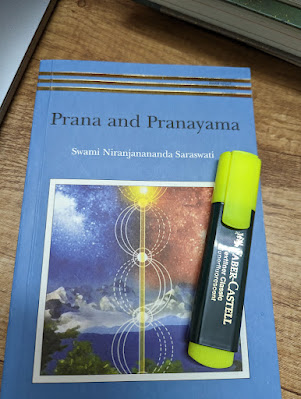When I first started reading this book in Aug 2022, it opened my eyes to multiple facets of Yoga philosophy - panchakoshas, pancha pranas, Chakras, Nadis, Swara Yoga, the role of Pranayama and the different practices. It is a comprehensive guide that talks about the importance of prana and practices to expand and control it.
This book is divided into three sections - philosophy, physiology and practice. The Philosophy section sets a basic context on different aspects that impact prana or are impacted by prana.
Many of us presume that prana is equivalent to breath.
Prana is the life force in motion. It is present in every aspect of creation.
Breath is an external manifestation of prana. Breath practices can help prana to flow freely. The blockages in the level of nadis and chakras need to be cleared and purified so that prana can flow and energize different parts of the body and brain.
It was fascinating to read about the benefits of pranayama, especially nadi shodhana and the importance of balancing ida and pingala nadis. Made me curious to dive deeper into swara yoga.
There were multiple learnings and takeaways throughout the book.
A living being is called a prani because existence is not possible without prana.
Worry and stress deplete prana.
Maximum prana is utilized by the brain.
"Everyone is born with a certain quantum of prana, but the quantity and quality change continuously as one goes through life"
"Every movement of energy manifests sound, and every sound carries energy"
Nearly 50% of the book is all about practices - the exact guidelines, benefits, contraindications and variations. This makes it a ready reckoner to guide the reader in adopting the various Pranayamas in their daily practice.
If you are getting started with Pranayama or Yoga philosophy, this is a good book to read and refer to.













